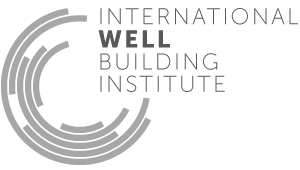WELL Building Standard®
We believe that buildings should be developed with people’s health and wellness at the center of design. The WELL Building Standard takes a holistic approach to health in the built environment addressing behavior, operations and design.
WELL is a performance-based system for measuring, certifying, and monitoring features of the built environment that impact human health and well-being, through air, water, nourishment, light, fitness, comfort and mind.
WELL is grounded in a body of medical research that explores the connection between the buildings where we spend more than 90 percent of our time, and the health and wellness impacts on us as occupants. WELL Certified™ spaces can help create a built environment that improves the nutrition, fitness, mood, sleep patterns and performance of its occupants.
Download the WELL Building Standard®
Concepts
WELL measures attributes of buildings that impact occupant health by looking at seven factors, or Concepts.
The Seven Concepts of the WELL Building Standard®
Air: Optimize and achieve indoor air quality. Strategies include removal of airborne contaminants, prevention and purification.
Water: Optimize water quality while promoting accessibility. Strategies include removal of contaminants through filtration and treatment, and strategic placement.
Nourishment: Encourage healthy eating habits by providing occupants with healthier food choices, behavioral cues, and knowledge about nutrient quality.
Light: Minimize disruption to the body’s circadian rhythm. Requirements for window performance and design, light output and lighting controls, and task-appropriate illumination levels are included to improve energy, mood and productivity.
Fitness: Utilize building design technologies and knowledge-based strategies to encourage physical activity. Requirements are designed to provide numerous opportunities for activity and exertion, enabling occupants to accommodate fitness regimens within their daily schedule.
Comfort: Create an indoor environment that is distraction-free, productive, and soothing. Solutions include design standards and recommendations, thermal and acoustic controllability, and policy implementation covering acoustic and thermal parameters that are known sources of discomfort.
Mind: Support mental and emotional health, providing the occupant with regular feedback and knowledge about their environment through design elements, relaxation spaces, and state-of-the-art technology.
Features
WELL is composed of over one hundred Features that are applied to each building project, and each WELL Feature is designed to address issues that impact the health, comfort, or knowledge of occupants.
Many WELL Features intended to improve health are supported by existing government standards or other standards-setting organizations. Some Features are intended to change behavior through education and corporate policy or culture, and provide information and support for making positive lifestyle choices.
Features can be:
- Performance-based standards: allow flexibility in how a project meets acceptable quantified thresholds.
- Descriptive standards: require that specific technology, design strategies, or protocols are implemented.
WELL Features are categorized as either Preconditions—necessary for baseline WELL Certification, or Optimizations—optional enhancements, which together determine the level of certification above baseline certification.
